#Vertical Farming Potential
Text
Farming Become Easier in Modern Times | Niche Agriculture

Modern Farming Techniques 2024
In the ever-evolving landscape of agriculture, staying abreast of modern farming techniques is crucial for maximizing productivity and sustainability. From precision agriculture to vertical farming, this comprehensive guide explores cutting-edge methods that can revolutionize your farming practices in 2024 and beyond.
Innovative Precision Agriculture:
Embrace the power of precision agriculture to optimize resource utilization and enhance crop yields. With GPS-guided machinery and advanced sensors, you can precisely monitor soil conditions, moisture levels, and crop health in real-time. By leveraging data-driven insights, you'll make informed decisions on seed placement, irrigation schedules, and nutrient application, leading to increased efficiency and profitability.
Unlocking Vertical Farming Potential:
Discover the potential of vertical farming to overcome land constraints and meet the demands of urbanization. By stacking crops in vertical layers within controlled environments, you'll maximize space utilization and minimize environmental impact. LED lighting and hydroponic systems ensure optimal growing conditions, allowing for year-round production of fresh, nutritious crops. Embrace vertical farming to cultivate a diverse array of vegetables, herbs, and even fruits in urban settings, promoting local food security and reducing transportation emissions.
Sustainable Practices for Future Success:
Incorporate sustainable farming practices into your operations to safeguard the environment and ensure long-term viability. Implement conservation tillage techniques to minimize soil erosion and improve soil health. Embrace cover cropping and crop rotation to enhance nutrient cycling and suppress weeds naturally. Explore regenerative agriculture principles to rebuild soil organic matter and sequester carbon, mitigating the impacts of climate change. By prioritizing sustainability, you'll not only protect the planet but also future-proof your farming enterprise against emerging challenges.
Harnessing Technology for Efficiency:
Leverage the latest advancements in agricultural technology to streamline your workflow and boost efficiency. From automated irrigation systems to drone-assisted crop monitoring, technology offers unprecedented opportunities to save time and resources. Embrace farm management software to track expenses, monitor yields, and analyze performance metrics, empowering you to make data-driven decisions with confidence. Embrace robotics for labor-intensive tasks such as planting, harvesting, and weed control, freeing up your time to focus on strategic planning and innovation.
Conclusion:
In today's fast-paced agricultural industry, mastering modern farming techniques is essential for success. By embracing precision agriculture, vertical farming, sustainable practices, and technology-driven solutions, you'll unlock new levels of productivity, profitability, and sustainability. Stay ahead of the curve by adopting innovative approaches that position your farm for success in 2024 and beyond.
#Modern Farming techniques#Modern Farming techniques 2024#Niche Agriculture Farming Techniques#Vertical Farming Potential
1 note
·
View note
Note
Lately I've been reading "Drawdown", by Paul Hawken et al, a comprehensive set of strategies for tackling the climate crisis. Your Cambrian Wildwoods post reminded me of one of the solutions - Silvopasture, from the Latin for 'Forest Grazing'.
Essentially it means proposing to farmers that a portion of land be forested and that their animals freely graze there. It can be extremely flexible - planting trees in existing pasture, thinning down woodland to allow for forage growth, using trees as natural fencing, and more.
It's got good potential for carbon capture, and also for saving farmers money in feed and fertiliser, creating better conditions for livestock by keeping them in the shade, and potentially providing secondary income sources in fruit, nuts, etc.
What do you think of it as a potential avenue for Welsh farming? The focus in "Drawdown" is on cattle farming, but I don't see any reason not to trial it with sheep - especially since it could be spun as a hybrid of both aspects of traditional culture...
("Drawdown" also emphasises peer-to-peer uptake through word-of-mouth, rather than being pushed by outsiders.)
Oh, yes - it's basically what they did at Pontbren. That was a farmer-led initiative - one of the big expenses with sheep farming is having to bring them into barns over the winter and supply all feed, but traditionally they'd have stayed out all year. So these farmers got together and went, "How do we ethically and sustainably reduce this expense?"
What they realised is that they were paying for (a) the government-enforced decision post-WW2 to swap to high-yield breeds of sheep that weren't suited to the Welsh climate and topography (i.e. wet as fuck and mostly vertical), and (b) the decline of traditional hedgerow management and shelterbelts. And so the dream was born.
They contacted the Woodland Trust purely to act in an advisory capacity - they wanted to know which trees would be best, and where. They could take much land out of production, but the beauty of hedgerows and shelterbelts is that they're linear features that replace your fences. That was how environmentalists got on board - we were invited, and we remembered that. We were therefore allowed to do a couple of experiments as it progressed, such as testing the infiltration rates of rain into groundwater rather than run-off and comparing it between hedgerow fields and fence fields. Meanwhile, the farmers replaced their stock with native breeds - I believe mostly Welsh Mountain Sheep, which look amazing:
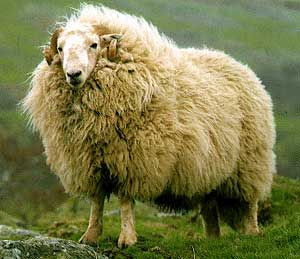
Ain't no rain getting in THAT.
Anyway, a few strategically placed shelterbelts and hedgerows later and:
The sheep can now safely stay out all year round, excepting storms
The sheep are actually healthier and have higher welfare standards
Floods have reduced thanks to higher infiltration rates
Soil erosion is reduced so the fields and river are healthier
The farmers have saved money
The farmers are now making extra money, because they started a tree nursery and sell trees as a side project
You can read multiple publications on it here
So yes! Silvipasture is actually a huge tool for the future that we need to be embracing, as is agroforestry for arable farming, and the frustrating/hopeful part of it is, these are tools we used to use. This isn't new knowledge - it's forgotten knowledge that we need to reclaim. But even aside from the immediate benefits, it also has massive implications for resilience in a world with a warming climate, and we need to do it faster.
590 notes
·
View notes
Text
Empowerment lies in wealth and the boundless capacity to do good. Let us break free from induced scarcity, challenge greed, and envision a world where abundance is shared, debts are canceled, and hunger is conquered through innovative solutions.
In this inspiring video, Abdul Tubman delves into the vast wealth of influential figures such as Jeff Bezos and contemplates the transformative potential of philanthropy. Abdul envisions a world where individuals like Bezos could play a pivotal role in addressing pressing global issues, advocating for the cancellation of student debt and innovative solutions to combat world hunger.
Abdul explores establishing a Non-Governmental Organization (NGO) that tackles societal challenges, including the issue of farmers' subsidies and their impact on induced scarcity. He suggests alternatives like vertical farms, utilizing minimal space to grow crops that could be used to feed the homeless. The discussion delves into the root causes of food scarcity and challenges the prevailing economic model prioritizing monetary gain over human well-being.
Abdul confronts notions of greed and artificial scarcity, emphasizing the role of economic monopolies and their pricing structures in perpetuating societal issues. Join Abdul in this thought-provoking exploration of wealth, power, and the potential for positive change when resources are redirected toward meaningful causes.
220 notes
·
View notes
Text

my other golden kamuy oc, Daichi!
He's from a small, in-land mountainous village in Aomori. He grew up in a poor but large family, where he spent most of his days helping out on the family farm. He married a girl from a nearby village, and they'd eventually get 4 kids together. He had to enlist in the army to support his family, and while away his wife and 2 of his kids passed away from smallpox.
Now, as the lone supporter of his 2 remaining children, he struggled to make ends meet. His mental health just worsened, and it got to the point where he considered ending it all, bringing his kids with him.
That's when Tsurumi showed up in his life. Tsurumi promised to support his family and make sure the kids got to go to school, as long as Daichi was willing to leave them behind and join the 7th division. Tsurumi informed him that a new war with Russia was on the horizon, and that he saw great potential to have someone like Daichi beside him.
During the war he got a few injuries, such as a small slit across the bridge of the nose, as well as a vertical slit across the lip. A Russian soldier bit off part of his ear, and he also injured his leg, giving him a slight limp. He also has some minor scars across his torso, arms and legs.
Post war he joined Tsurumi and the rest of the 7th in search for the tattooed skins. He got along well with Tanigaki and the Nikaidou twins.
#auuugh I drew him!!!#he's 36 btw he likes bitter foods and dislikes green tea#golden kamuy#golden kamuy oc#gk oc#my art#don't read too much into his character 😇 it doesn't tell u anything abt me and my issues 😇😇😇 not at all 😇
30 notes
·
View notes
Text
Sunzaun has designed its vertical solar systems for the growing field (no pun intended) of agrivoltaics – when agriculture and solar coexist on the same land. Crops are grown, or smaller animals such as sheep graze, around or underneath solar panels. Benefits include efficient land use, clean energy, and potential water savings due to shade created by the solar panels.

The Novato, California, company says its vertical solar systems can also be used as city infrastructure – that is, along highways, next to railroads, and as residential or public fences.
Sunzaun says on its website that its system is designed to accommodate framed and unframed bifacial vertical solar panels, and that wires are managed in a safe way.
12 notes
·
View notes
Text
It's the February Steam Next Fest, so here's some potential game demos to check out this weekend!

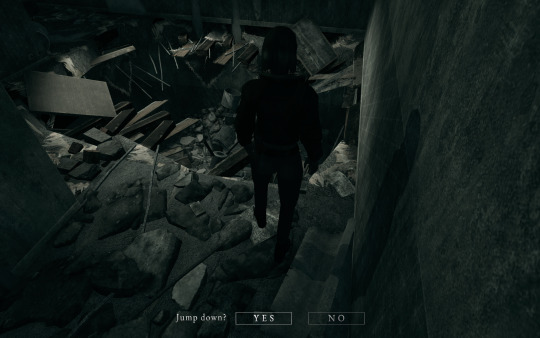




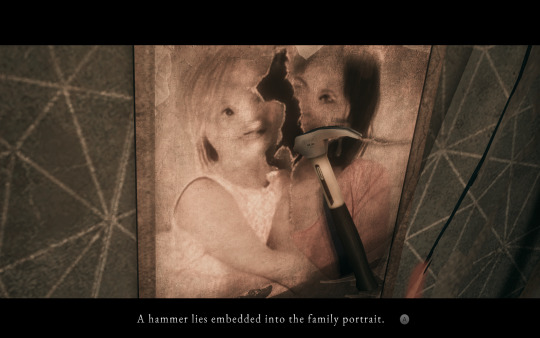
Hollowbody | Press Kit
It's a Shipper's biggest fear. You're grounded in the exclusion zone, twenty miles of death and decay sealed off by the towering, suffocating walls erected after the collapse.
Hollowbody offers early 2000s-style survival horror, citing titles like Silent Hill 2 and 3, Rule of Rose, and Kuon as inspiration. As you ascend the apartment building to try and make contact with outside of the exclusion zone, the demo makes use of a blend of dynamic and fixed camera angles. This approach extends to combat, which strikes a nice balance between a more classic style in which you must work with the camera angles, striking fear in you when you can't quite see what is in the room with you, just offscreen, and making movement and fighting feel natural.
If you were craving horror of a particular period, Hollowbody strives to capture that with its visual presentation, and with a particular update to the demo, Hollowbody now has the option for tank controls.


Rusty's Retirement | Press Kit
For a more casual player, Rusty's Retirement is an idle-farming simulator that lives at the bottom of your screen while you work, watch, chat, or play. Automate your farm with the help of robots, and produce biofuel for them with the plants you grow.
The game includes a cameo from Haiku the Robot, as the two games share a creator. Haiku can be found helping your automated farm :)
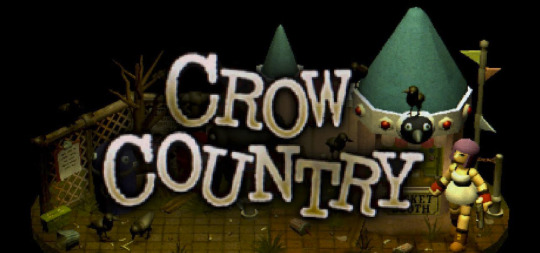
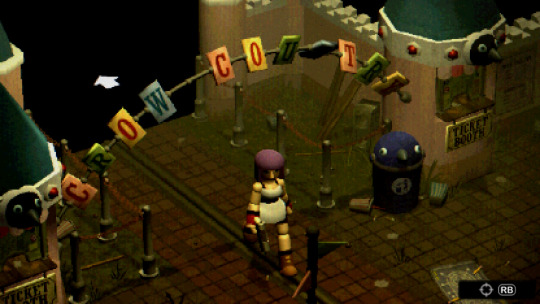
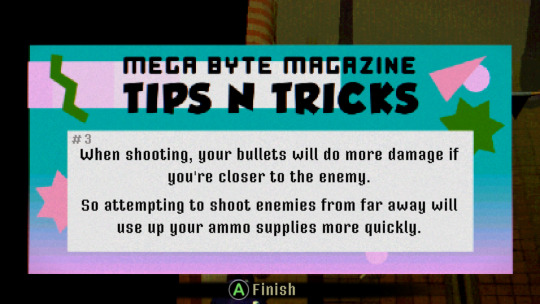
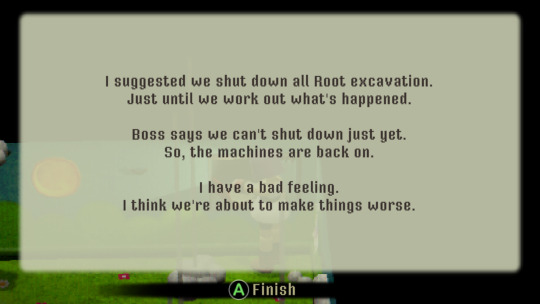
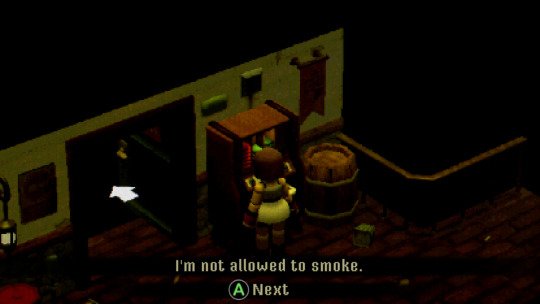
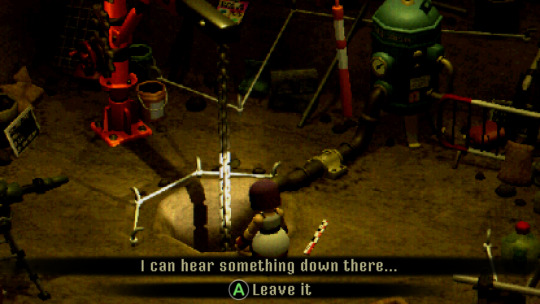


Crow Country | Website
The year is 1990. It’s been two years since the mysterious disappearance of Edward Crow and the abrupt closure of his theme park, Crow Country. But your arrival has broken the silence, Mara Forest. If you want answers, you’ll have to venture deep into the darkness of Crow Country to find them…
Another throwback third person survival horror game with an armed female protagonist, Crow Country establishes an atmosphere switching between "tension and tranquillity", trying to steady your aim at the head of a shivering, approaching enemy and the warm glow of the fire in a save room. The game places an increased emphasis on puzzles and riddles, and as you try and manage your resources and slip past enemies (the game emphasizes that you don't have to defeat every enemy you come across, which could bring trouble later) you'll be able to absorb the whimsy and detail of every region and room.
If the creatures around every corner frighten you, or you'd just like to be able to absorb every detail of the theme park uninterrupted, the game offers an "Exploration Mode" difficulty for you to enjoy.

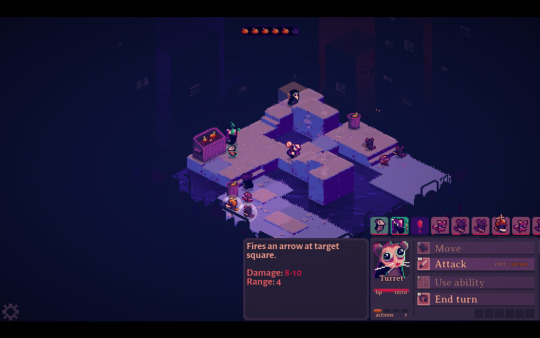

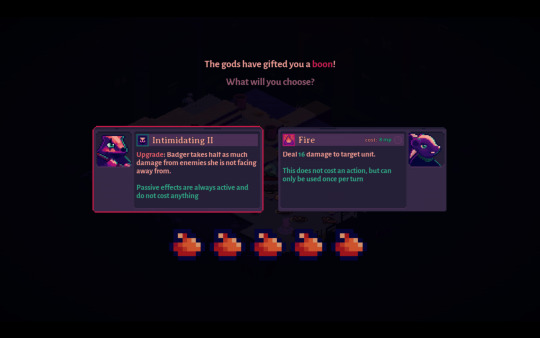
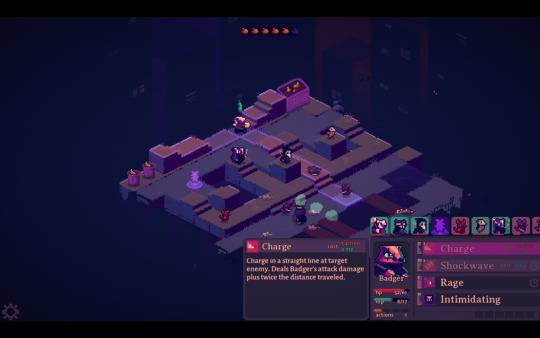
Trash of the Titans | itch.io
What if your turn-based fantasy tactics had an urban mammal element and was very, very purple?
Enter this roguelite to fight a rat gang over dumpsters, upgrade your skills, and play trash-eating Tetris to get stronger. Learn your abilities and how to utilize the antics you can pull against the waves of rats (large rats, small rats, caster rats summoning demon rats).
Your party is a Badger Barbarian with a charge attack that increases damage the further away she is, a Raccoon Rogue that uses stealth to rack up kills and move across the map, a Skunk Wizard that casts more than just poison spells, and a Possum Ranger with a ricochet that will stack up the RAT CRUE kills.
Find surprises like the fact that your Possum Ranger's "turrets" in fact refer to possum babies, and their ability to retreat along a path back to her upon defeat can be used to your advantage.


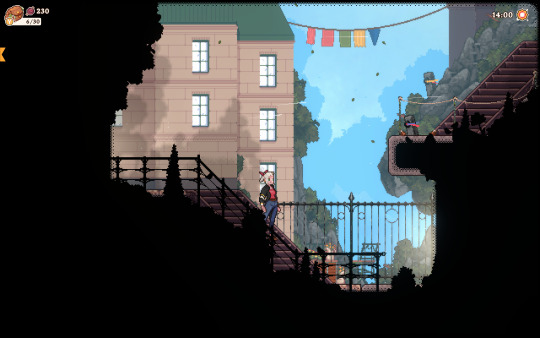
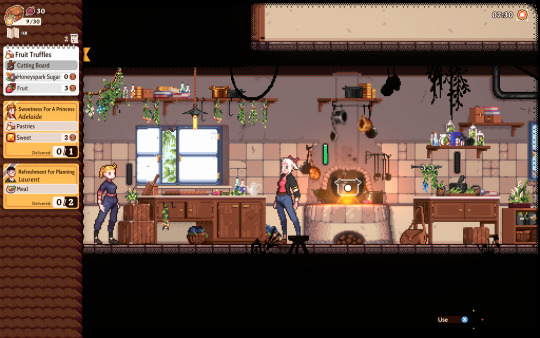
Magical Delicacy | Press Kit
A wholesome pixel art platformer. Cook magical delicacies from a vast collection of ingredients in your own shop. Explore an unfamiliar town and deliver tasty treats to the townsfolk. Learn new ways to traverse, discover secrets, and experience a unique witchy world.
If you like cute titles where you cook and manage a shop but craved a little more verticality, Magical Delicacy offers you a platformer with witches and a dash of intrigue. The game offers cooking, gardening, shop management, and double jumping your way across a surprisingly formatted town.
Hey, you're a witch with a red bow going out for deliveries. Sounds familiar.
24 notes
·
View notes
Text
Memories from holidays in Spain
I have remembered some unforgettable experiences I’d like to share with you! Some years ago, when holidaying in Spain for the summer, we stumbled upon some very interesting places. We stayed for a few days at a small sea-side town, where people usually go to enjoy the beaches, the sun and the nightlife. It was a famous destination for young people that wanted to enjoy affordable holidays with excellent facilities. While the town seemed quiet and relaxed during the day, at night it was exactly the opposite. By the time the sun went down, it would become over-crowded with young tourists, that would party all night, getting drunk and high. My girlfriend and I would go out partying two-three times, but for the rest of our stay we preferred spending our nights at exquisite restaurants, where we could enjoy eating our favourite meat. In the town there were three very famous restaurants that served male meat exclusively. The men served were of excellent quality, thus the prices were extraordinarily high.
We had a pair of feet for a ridiculously high amount of money, but in the end it was worth it. The feet were harvested from a 22-year-old Spanish guy that was being prepared for this for many years.

His dream was to become a professional football player, and he had a contract with a team when he was still a teenager. When signing a contract with a sports team, you basically consent to being owned by the team. If you succeed as a player, you continue your career and it becomes your profession. But if your performance is inadequate, your team will receive compensation for the effort they put into training you, by selling you to a man farm. So you either make it or you end up becoming meat. This specific man did not manage to impress with his performance. By the time he turned 18, he was transferred to one of the best man farms in Spain. His coach saw his potential as meat when he saw him in the changing rooms. Apart from realising how meaty his body was, he had also seen how smooth and meaty his feet were. He recommended extra care for the guy’s feet during his stay at the farm. And he was right about it, as he was finally chosen by one of the best restaurants in the country, mainly because of his feet.

The feet were harvested and cooked in front of us. Every table had its own guillotine, grill and stew pots. Our chef brought the boy to us and placed him on the other end of the table. His feet were still in shoes. It’s a tactic of the restaurant to marinate the men’s feet in espadrilles, which gives it a unique Spanish touch. They are certain that this type of shoe is excellent for transferring flavours and spices to the foot flesh. The feet are marinated for about a week in the espadrilles, and after that they are ready to be cooked. The restaurant also sells espadrilles to any customers that would like to use this marinating process for a boy at home.
Our chef took the espadrilles off the boy, and revealed the delicious moist feet that had retained a yellowish colour from the saffron and the other spices. The smell was divine even though the show had not even started yet. The main trick for this result was to keep the shoes on him for a whole week, allowing the foot meat to sweat and absorb all of the flavour of all the herbs and spices. The feet are not supposed to be touched or washed after the shoes are worn. The chef was careful not to touch the feet at all once they were exposed. The boy was tied up and gagged, and in his eyes you could see his intense sadness. It must be quite hard to accept that the most important body parts you needed for your dream career, have instead become the reason you’ll be eaten.
His smooth feet looked oily and fresh as he wiggled his toes. When the chef grabbed his legs, he knew this was the end. His ankles were placed on the guillotine, and his legs were secured on the table. His back was placed on the vertical wooden surface, and his torso and arms were secured on that too. Behind his head there was a sharp blade which seemed ready to slice his neck off. As the chef moved his hand towards the handle of the blade above his ankles, the boy closed his eyes and his whole body became tense. It was as terrifying for him as it was entertaining for us and the chef. The chef asked us to push the button in front of us when we ‘d like to end the boy’s suffering. He counted to three and he pulled down the leaver. The two feet were chopped by the blade and they fell on the hot grill below them. We could immediately hear the soles sizzling on the grill, and the smell of foot meat and spices filled the room. The boy screamed through his gag, and he kicked his bleeding legs. The guillotine was moved higher on his legs, with the blade now placed on top of his knees. The chef counted to three, and chopped his calves off. The screams through the gag became even louder, and his eyes were ready to pop out. We decided to finally put him out of his misery, and we pushed the button. The boy was beheaded automatically by the blade, and then the chef removed the gag and placed the head inside the stew pot in front of us. He chopped some vegetables, and added them in the pot. By the end of the cooking session, the boy’s calves were carved into tasty grilled steaks, and his foot skin became crispy and brown on all sides. The aroma of the feet was more intense than ever. The boy’s head was also delicious, with the meat falling off the skull. The rest of his body was taken back to the kitchen, where it would be turned into other dishes.
It was one of the best grilled pairs of feet we’ve ever had. Needless to say, we bought some pairs of espadrilles to use on other men’s feet. But even though this experience was so unique, it was quite similar to other experiences we’ve had in expensive restaurants in Spain and elsewhere.
What really surprised us was an unexpected eatery we stumbled upon, when we were looking for lunch options on a Sunday. We had enjoyed a morning at the beach, and we were looking for simple food options, like seafood, paella, pork or chicken dishes. While strolling around the town, we realised there was a smell that felt quite familiar. It smelled just like roasted man meat. The kind of smell you get when there is a spit-roast party going on. But it was 10 times more intense, which meant loads of guys were being roasted. We thought there might have been a spit-roast party going on at the beach, but we were at the beach the whole morning and there was nothing like that.
We let our nostrils guide the way, and we ended up in an area of the town which seemed quitter and less touristy. We finally found where the smell was coming from. It was a rotisserie… Yes, like the ones that sell rotisserie chicken. But we could see no chickens being roasted. The whole restaurant window was filled with spit roasted men on display. There were at least 5 rows of men on spits, with 10 men on each row. And there were additional rotisserie ovens with smaller body parts being roasted, such as heads, feet, hands, ribs and calves. We had never seen such a place before. There were more than 50 men being simultaneously roasted, some of them bronzer than others, while some were just recently placed on the spit.
It wasn’t just shocking to see so many guys being cooked at the same time, but also the fact that the restaurant inside was crowded, and the queues in the street were huge. At least 100 people were seated inside the diner, enjoying the freshly roasted man meat. Another 20 people or so were waiting at the door. And the weirdest thing of all was how long the take away queue was. It was at least 100 metres long, and people were just ordering pieces of roasted men to take home. There were also a couple of delivery men collecting orders.
The majority of the customers appeared to be locals, or at least Spanish. Only a few tourists were around, and we were two of them. We were intrigued, but also curious about the place. We definitely had to try it. I approached the entrance to check the prices, and I couldn’t believe my eyes. I had never seen male meat being so affordable. It was almost at the same price as pork or chicken. A pair of roasted feet with potatoes only costed 20 to 25 euros, a calve was around 15 euros, a head 20 euros and a whole man would only cost around 100 to 150 euros. At first we thought there was something dodgy going on. We thought that maybe it was an illegal establishment, or that the roasted guys were of really bad quality. But it didn’t seem like it, as all of them looked excellent, and the restaurant looked legit. We tried asking some people for more information, but not many could speak English. Finally, we decided to join the queue and next to us we found a local that was fluent in English and was happy to answer some of our questions as we were waiting.
He was a man in his 40s, who lived in a nearby town with his family. He told us that it is kind of a tradition to eat rotisserie meat with potatoes on Sundays. He was a frequent customer at this particular rotisserie, and his family loved the meat from there. This time he came to eat in by himself, as his wife and children headed to the big city for the day. We asked if he knew how come there are so many men being roasted, and why the prices were so low. He informed us that the rotisserie only operates on Sundays, and there are at least 100 men that are served every week. The majority of the men were in reality young tourists that got in trouble. During the summer months, the restaurant is overloaded with meat because of the thousands of tourists that visit. Many of them were British, but also a lot of them are German, Russian, French, Dutch, Italian and of course Spanish. He said that the locals demand to be respected by the tourists, and if the tourists don’t comply with the rules, they end up arrested and possibly eaten. For example, after partying all night, a lot of guys do drugs or go off the rails. They break things, vandalise monuments, pee in the streets, shout, harass people and many other offenses. After a specific time of the night, if a young man breaks the rules he will most probably be arrested and taken to the police station. Their parents or loved ones will be informed that they have been arrested, and that by the morning they’ll be considered as meat animals. Once they get arrested for specific offenses in this town, there is not much they can do about it. No lawyer or government can save them. They are transferred to the local farm, which is only 20 minutes away. There they are prepared and examined by professionals, and when you are deemed ready, they are sold to restaurateurs of the neighbouring towns. That’s how this rotisserie receives the majority of its meat. There are also other man farms around the region that follow similar procedures, and the rotisserie owners make sure to buy a variety of men every week. The prices are very low because these men are usually prepared to be eaten in less than a week. Of course they undergo health and sanitary checks and they are perfectly suitable for consumption. Another reason for the low prices is the efficiency of having one single cooking method for all the meat. No need for exquisite recipes, ingredients and pioneering ideas. Traditional spit-roasting techniques guarantee excellent meat quality, and delicious flavour.
While waiting to be seated, we could see the display area with all the men rotating. We could even recognise some of those guys. Two of them were a British couple that was staying at our hotel. We had seen them around the swimming pool area.

It was quite impressive that we could still recognise them while they were impaled and roasted to a crisp. We were considering ordering their feet, but another customer had already ordered them for take away. We saw the waiters pausing the rotation, and chopping all four feet, placing them in take away boxes. How come we had never seen anything like this before? Feet like those would have costed a fortune at any other restaurant. But the person that ordered them only paid 40 euros.
As we were approaching the time we would be seated, we saw another boy we recognised. It was a German guy that was sitting behind us with his girlfriend at the beach some days beforehand. We had even commented on his feet being ridiculously meaty, when we saw him sunbathing.

His girlfriend was in front of us in the queue, holding hands with another guy who looked Spanish. The German guy was naked and tied up, and the waiters dragged him to the spit-roasting machine where he would be impaled. The girlfriend waved at the boy from outside, and she sent him kisses, as the spit entered his ass. She laughed and joked about it with her new boyfriend and then by the time the German boy was rotating in the oven, she stopped giving him any attention. She said to her new boyfriend that she’d love to have the head and genitals of her ex, and he decided to have a calf and a pec.
This was what we needed to hear. His meaty feet were all ours. After waiting for another 20 minutes, the number of men on the spits reduced significantly. There were only about 15 men left, but the queue behind us was still huge. Inside the restaurant, most cages were empty, apart from 4-5 cages in which a dozen men were still waiting for their fate. The German guy was relatively golden now, and his feet looked perfectly glazed. It was unlikely that anyone would get to them before us. And to our own surprise, the head of one of the British guys we had recognised, was still rotating next to the remains of his boyfriend.
We finally sat down after an hour of waiting. First thing we did was to order the feet of the German guy, with potatoes as a side. We also ordered some of his ribs, and also the head of the British guy, which looked very appetising. We paid 60 euros in total, and had a meal like no other. The quantity was unparalleled to anything else we ate, and the quality was impressively good. The meat of the German boy was very tender and juicy, he was probably around his mid 20s. The foot meat was comparable to the one you would have at a Michelin restaurant. He had excellent arches, and his toes were big and meaty. I especially liked the crunchiness of his heel, and the crispy skin of his tops. His ribs had so much meat on them, and also the perfect amount of fat. The head of the British guy was cut in half by the cooks, as we wanted to share it. His cheek meat was very tender, and the whole skin was roasted to perfection. Much better than having a roast chicken. We were very lucky to have found that place. We visited again the last Sunday we were there, and we were not disappointed. That time we ordered more feet from various guys, and all of them were superb. There’s nothing like sunburnt tourist meat being spit-roasted on a Sunday.
96 notes
·
View notes
Text
Brazil: "Vertical farm technology has potential to grow 112 tons of wheat yearly"

In partnership with the Brazilian Agricultural Research Corporation (Embrapa Hortaliças), 100% Livre, a Brazilian vertical farm, managed to grow high numbers of wheat on its vertical farm.
This year, the experiment with wheat in a controlled environment has been a scientific, technical, and financial challenge for 100% Livre, which, in the 4th test with the cultivation of this grain, started in June this year, managed to double its productivity.
In real numbers, this means a production of 2.8 tons per hectare each cycle, which lasts three months. Thinking about four cycles per year and the 5 floors of the vertical farm, 100% Livre, with its current technology, has the potential to produce 112 tons of wheat per year. This is a result that exceeds the annual production of wheat in the field by 1000%, whose average harvest is 11 tons per year for each hectare of planting.
Continue reading.
19 notes
·
View notes
Text
(Tech's Annotated) Map of The Zones
There is an official/presumably canon map that was created and circulated around the time of the music videos (viewable here). However, after playing around in this sandbox it quickly feels deeply and entirely too small (the city only around 3 miles across, and then around 15 miles from the city to the edge of the zones — it's simply not enough space) for all of the madness going on inside of it. So here's the headcanon/blog canon version of things!
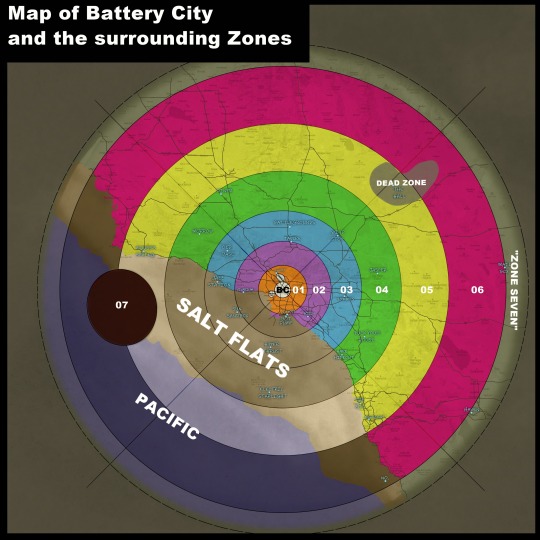
The zones of the west coast center over Battery City, and are roughly 300 miles in diameter, making for over 30,000 square miles of potentially habitable ground.
Note: "Old world" locations visible purely for irl reference, the city names wouldn't still be in wide use or marked on an official map. The annotations are approximations in some cases, based on info I got from people who made up the locations — if it belongs to you and you're thinking 'hey that's not where that is' please let me know! I will scooch.
I absolutely recommend opening this in another tab for better viewing, as it is massive and maybe slightly unreadable at tumblr dimensions. (Oops.)
The roads -some old, some new- are generally passable, but many are very rough. Detours are common as the desert, and killjoys, shift obstacles around. Moving straight east from the city, it would take a person about 5 days to get to the edge of zone 06 on foot, 1-2 days on a bike, 6-8 hours by motorized vehicle, and less than 2 hours by helicopter. Since Better Living patrols are almost never moving in a direct line unless they're hunting specific quarry, they tend to pack heavy, and take multi-day or multi-week patrols that sweep the zones, looking for 'rescues' to make and hostile settlements to squash. There are also a number of Better Living outposts in the inner zones: permanent encampments where employees are left to watch over particularly desirable or troublesome locations, such as the robotic dumping grounds in southern zone 02, and the borders of the annex.
A lot of the livable area is characterized as desert or steppe, partly due to the regions natural inclinations, partly due to the environmental devastation wrought by the wars. To the west and south, the old coastline now marks the start of the salt flats: empty stretches of ground that end at the current coastline some miles out from where it once was, turning the former channel islands into a spattering of rocky, mountain-esqe outcrops surrounded by hard, packed earth too salty to bear much life. Many settlements and travelers prefer the north and east, where the terrain protected some of the valleys and so echoes of the forests and other natural resources remain — as well as echoes of the wildlife. To the south(east), conditions start dry and get drier, providing massive challenge to anyone who doesn't know the way to carve out safety and make use of the weather.
BATTERY CITY
Ten miles in diameter, closed off by a barrier wall with fixed entry points, all of which are heavily monitored.
Battery City is a self-contained and somewhat* self-sufficient city. In the early days -before they built the walls- the plan was always to expand, crawl outward and establish a new world from the rubble of the old. However, conflict with early rebels led to the division of city from 'zones', and the heads of the corporation at the time chose a ten mile diameter to lock behind their main wall. Largely prevented from expanding and lacking the room for urban sprawl, the city has gone vertical to keep up with the demands of its population. Buildings and entire block levels extend both up and down, in sky scrapers as well as some subterranean levels (the latter of which are mostly used for synthetic farming and detainment.) Rather than divide by production, the city is designed so that, in the event of failure or invasion, no one zone of it can be commandeered to cut off the rest. Factories and power plants are interspersed with dwellings and other means of production, and the divides dictate the city's class system more than occupation. The outer wall is dozens of feet thick; the only roads in and out are tunnels guarded around the clock by S/C/A/R/E/C/R/O/W task force. For more detailed city notes [I will make another post which I will come back and link here.]
It can be easy for things to seem small, with the city so dwarfed by the zones as it is on this map, but the city inside the wall alone covers roughly 320 square miles of land [compared to L.A. (503), New York (469) or Chicago (234)] and hundreds of thousands (if not millions) of people live in Battery City. Many of them are descendant of people who never left, and the walls went up around them; many others migrated there, in out of the wild and destruction. Of the three remaining (official) settlements in the US, Battery City has the largest civilian population.
*Battery City does do its own farming, but is supplemented by resources from Fort FISK and the Fishery, another Better Living establishment in the southern US. In a crisis situation where FISK was unable to send supplies, the city could sustain without lifestyle changes for approximately five years.
ZONE 01
Ten mile wide band around the city, marked and separated from the other zones by a series of border walls and fences. Regularly patrolled.
There are many buildings, most of them crumbling, that were once urban sprawl and the suburbs. Thanks to the city's tampering with the weather, zone 01 shares most of the benefits, and can rely on slightly lower temperatures, regular safe rainfall, and even a four-season year (while the outer zones tend to have more like two seasons, dry and wet.)
Despite the city's attempts to section it off from the other zones, 01's borders aren't secure, and a small number of killjoys regularly move through the wreckage of the area. These are the most hostile and often least recognized killjoys — extremists even by the standards of arguably violent killjoy culture. They launch attacks on the city, the walls and patrols and citizens alike, and keep the rubble of the suburbs too unstable for the city to continue to expand. Many die young and unrecognized.
Zone 01 also contains the city's two expansions, as acquired in 2020: the Neon District and the Annex. The Annex is largely agricultural in nature, a proto-version of the much smaller greenhouses the city tried to establish in later years. The Neon District is an expansion of the outer city, mostly containing civilian dwelling. Where once the slums and Neon were the same, now the slums are at least inside the main wall, and Neon has become adjacent to the city. Neon houses almost exclusively registered neutrals, many of whom commute into the city to do undesirable jobs for low pay. On BL/ind paperwork, the Neon District is both a neighborhood in the zones and the expanded dwelling, but among citizens, the Neon District "Slums" of the city and the district's expansion, "Neon", are different places entirely. [Also more details for this in the city post.]
ZONE 02
Fifteen mile wide band around zone 01, marked off in some places by (often unmaintained) border fences. Regularly patrolled.
As in zone 01, what remains of the old world's sprawling boroughs make up most of the landmarks, though here in zone 02 they're less stable. More spread out, and prone to one day shaking apart for no entirely clear reason. The landscape begins to shift in the north and northeast, turning hilly. The city's weather control effects taper off within this zone, so that the inside mirrors a lot of zone 01's weather, while the outer sections reflect more of the desert. Overall, the two often clash, and weather in zone 02 changes at the drop of a hat. It's rarely dangerous in and of itself (typically no acid rain or poisonous fogs) but the speed and frequency of the changes make attempts to travel through and settle in zone 02.... interesting.
Scattered around zone 02, amidst the crumbling infrastructure, there are both Better Living outposts, where patrols sent out from the city stop or bed down, as well as some more permanent installments. The unlucky are sometimes shipped out for a few weeks at a time to man these watch points, such as the Better Living building that overlooks the robotics dumping ground south of the city, just beyond the old coastline. Just as equally, there are killjoy encampments dotted across the zone, populated like a forward front, often taking in anyone who manages to escape the city, and serving as an early warning system to the rest of the zones. Zone 02 is often considered a "buffer" zone: too chaotic for the city to really want it, but too valuable to leave untouched — too controlled and close for the killjoys to claim it, but too dangerous to let it be absorbed. Thusly, it sits as something of a no-man's land, and is arguably the most dangerous part of crossing the zones in either direction.
That is, it's the most likely place to get killed by a person in the name of the grand conflict, anyhow.
ZONE 03
Twenty mile wide band around zone 02. Occasionally patrolled.
Many of the old buildings are gone, dusted away by the bombs of the wars or scorched up by the fires or crumbled away in the time since. Those left are the most sturdy, or else the ones rebuilt by dedicated zone dwellers. There's a few old neighborhoods, but mostly things aren't so closely or neatly laid out as the old-world neighborhoods used to be. Weather takes a turn for heat and dust and desperation: desert standard from here out.
As the beginning of proper killjoy territory, zone 03 is the most densely populated, and what most people think of when they're imagining the chaos of large groups and the vibrant party scene. Despite a decent number of permanent settlements, Better Living patrols don't sweep though very often, in part because they almost never find any actual killjoys, only the signs of life. (The rest, because it's simply too large and push back is too strong for the company to dedicate the resources to trying to lock it down.) Rebels living in 03 are heavily interconnected, and experts at avoiding patrols. With a whole system of bells and whistles and warning phrases, entire trading grounds empty in minutes ahead of patrol warnings only to go right back to their dealings the moment the coast is clear.
Popular destinations include Tommy Chow Mein's place, an old motel repurposed into a trading market in the east, Regal Riotess's Battlegrounds, a sparring and entertainment venue in the north, and the Hyper Thrust, a club and musical venue to the south. The Sun Sandbox, a music and event venue famous for its reflective quality, shines out in the east here. Many other traders center themselves in 03, coordinating into pop-up markets or setting up more permanent locations -such as the Wind Stop on the fence to the northeast- as killjoy movements across the zone support or demand.
ZONE 04
Twenty-five mile wide band around zone 03. Rarely patrolled.
Another fairly populated zone, though things spread out as the terrain and crumbling structures demand and groups become more distinguished. Drier, often flatter terrain means dust storms pick up in frequency here, and, though rainfall is typically sparse, flash floods run the risk of sweeping straight over things without much obstacle when they pour down out of the ridges in the northwest.
As opposed to the tight-knit nest network of zone 03, groups in zone 04 tend to be more distinct from and less trusting of each other. Turf disputes aren't entirely uncommon, though conflicting groups usually prefer boxing rings (one 'champion' from either crew battling it out) over all out brawls. Growing distances between settlements means radio contact becomes more important. It's thought, though it hasn't been proven, that Dr. Death runs the WKIL out of zone 04. Better Living patrols only ever cross into zone 04 if they're on the hunt for a specific target, and as such they're usually more hunting parties (colloquial "murders") than route 'patrol' parties.
04 houses a diverse mix of groups and locations: the infamous Fabulous Four's Diner sits to the north, while in the east a neutral settlement, Jasper, has planted their roots into an old lake bed. There's a little less of the party scene here, but it includes the Fuck You!!!! House, an establishment that promises bloodshed every evening, one way or another, and out in the flats there's Electric Starlight, part bar for their regulars who dwell around the old Channel Islands, part destination venue for the massive rave-like parties and shows that take place there as often as can be put together by the owner.
ZONE 05
Thirty mile wide band around zone 04. No patrol schedule.
Ambient radiation levels are a touch higher in zone 05, and pockets of danger exist that travelers and those trying to tame the outer zones should be wary of. Rainfall also takes a turn for the worst, as it becomes more common for it to be toxic to consume and/or cause burns to exposed skin from this point further (a happening not impossible but more rare, in the inner zones.)
To go with growing environmental dangers, there's a sharp drop-off in cooperation around this zone too. Groups tend to be less generous with their supplies, and while the waves remain a vital tool for communication and keeping ahead of things, crews that come face to face aren't likely to trust each other very much, if at all. The stakes are simply too high, the margin for error too narrow. Bad news is all too common: contract killers and more radical groups are easier to find, and easier to bump into.
Somewhere near or perhaps even within the Dead Zone to the northeast, a particularly vile and violent group of DESTROYA worshipers has set up permanent residence. They journey out from whatever base they have to attack others, city and zones alike, without prejudice. They're known to descend on churches or shrines of other desert deities with greater regularity and more demonstrative end results, but won't say no to fucking anyone up just for fun. The wise give them a wide berth, and heavily vet individuals who might only be posing as lost and looking for help...
ZONE 06
Thirty-five mile wide band around zone 05. No patrol schedule.
Sights include sprawling vistas of desert skies and plenty of odd happenings, but not much else goes on in 06 on the regular. The terrain gets tougher, less tame and more churned apart by the wars and the rattling of the ground since. Radiation ticks up a little higher, and the places where it really clings will have an unwary journeyer dizzy and good-as-dead before they can even guess what's going on. It's easy to stumble into a gruesome death, out here.
Many zone dwellers don't go this far. Those who do are often the spiritual (or crazy) type, drawn by the odd sightings and phenomena such as lights in the sky, voices in the air, and landmarks that move. Any of it may or may not be real, depending on which story gets told and who is doing the telling. The other dustkids who travel through 06 are typically only there to pass along messages:
Several churches to various zone deities are tucked away here and there, ready to welcome the lost or, in the case of the unmanned shrines, offerings to the likes of Papa Sol and the Phoenix Witch. The mailbox sits in a little valley due east, and marks the outside border of the zones — "the end of the world".
ZONE 07
Isolated location also called The Anomaly located in the western quadrant.
Plopped down on the coast like something that crawled up out of the ocean and gave up on trying to walk across the flats, 07 is a mystery of a thing. It is consistently drenched in heavy fog no matter the surrounding weather. On approach, the ground quickly gives way to a soggy, sticky mess typically found in bogs or marshes, and it's presumed the ground within the fog cloud is the same.
Presumed, because no one goes into 07. No one who wants to return, anyway. Even Better Living has stopped sending investigative probes, manned or otherwise. The readings never make it out, and the people only rarely do, and only do so greatly changed. Often, reduced to vague shadows of their former selves, or else entirely delusional, sometimes even violent.
The superstitious types often refer to zone 07 as 'the mist', 'the veil', or 'the thin place', believing it to be a location where the world of the dead comes into contact with the living. This rumor is largely fueled by the human-like shadows often seen in the mist. Whether they are spirits or simply shadows or something else entirely, no one can say.
Pursuing answers in the matter of what, exactly, 07 is never ends well.
ZONE SEVEN
An approximate 'safe' band of 5-10 miles around zone six.
So named because the city had already designated the anomaly on the coast as "zone 07", meaning that killjoys could refer to something by that name and it wouldn't immediately set off any alarms. This zone seven is mapped almost exclusively by word of mouth, it does not feature on Better Living maps ((it's only on this one for visual aid)), and is rarely written down by killjoys to better guard their knowledge of things that just might begin to be out of the city's reach.
A hostile terrain pitted with unstable ravines, there is little shelter, even less water than the established zones, and further threats of radiation spikes, electrical & sand storms, and a variety of hostile wildlife drawn in from the wilds by the potential for someone to eat. Even those that know the landmarks, where to find shelter and make use of what little water can be found, take risks going out into this area. So they tend not to, unless things are bad enough.
As things are now, The Haven is the only known establishment of any kind within zone seven. It is, technically, a lighthouse, a location that will offer aid to anyone who finds their way to it, but as you can imagine they don't typically get a lot of outside traffic. (In other words: it was absolutely bananas cage mad behavior to set up a permanent encampment of this size out here. Anyone who doesn't know the Haven for trade reasons probably only hears rumors and thinks they're all insane for trying.)
THE EMPTY ZONE
Officially, anything beyond the edge of zone 06: which is to say, “nothing.”
The perfect truth is that the lines aren't so rigid as is convenient to mark on a map, and there's all of seven to account for, with more gradually being explored, word of more safety spread as it's found. But it's dangerous work. Unforgiving work. Few people dare to push the limits of the outer edge, believing instead that the way to true freedom lies in dismantling Better Living, not running from it. As things are, the empty zone beyond the end of the world, the untamed wilds, really is nothing but nothing. In theory there are livable lands, ways to cross the old cities, looting or building, striking out. In theory there could even be settlements that don't and never did belong to BL/ind, people who survived and continue to scrape their way along, or maybe even thrive. In practice, there's no guides and no guarantees, no promise of anything. In practice, to push beyond zone seven is all but certain suicide. Very few dare try it. Even fewer return, and it's been many years since anyone attempted a major excursion.
Even Better Living goes under the earth to cross the distances between their cities.
#c:\\work>dir z:\ wld:bld* //.insp .stdy/#(rings bell) y'all come get your excessive worldbuilding#uhhh listen. i think this is done but if it's not pretend that it is#(pls poke me for typos if you find any but i can't promise i fix them today i'm so sick of looking at this ;sdkfjg;lsdkjfg)#also i tried really hard to make this readable and might update it later b/c tumblr keeps cOMPRESSING IT#but. i have had this in my drafts for MONTHS and i want it! out!!!! so. sry if hard to read but also here it is anyway
4 notes
·
View notes
Text
Belgium-based Urban Crop Solutions (UCS) and Germany’s Aixponic have developed a new technology in sustainable agriculture that cultivates saltwater plants through indoor farming technology. The collaboration addresses water scarcity issues faced by the F&B industry by minimizing freshwater usage through saltwater irrigation. It also emphasizes the broader potential of indoor vertical farming which has potential to go beyond growing leafy greens and hone in on crops with nutraceutical benefits.
The collaboration merges an indoor fish farming facility with a vertical farm, tailored to meet the specific requirements of critical environments, facilitating optimal conditions for plant cultivation
3 notes
·
View notes
Text
CalmWriMo Day 23
[11/23/2023]
Update!
Firstly, happy Thanksgiving to those who celebrate! Enjoyed the day and foods with family and am thankful for that. (^.^) Also seriously feel like I have soooooo much time today!!! Had plenty of time to do all sorts of writing including below and a blurb I yeeted out earlier! Feels good. (^v^)
Progress:
2 Hour Writing Goal: ✅
Blurb: [see below]
Self Care:
Food: ✅
Hydration: ✅
Sleep: ✅
Reading: ✅
Blurb: All About the Food of Neocago!
In Neocago the majority of food is produced within massive vertical farming complexes known as agritowers. From them there are a number of common base products such as bioengineered mushrooms, ferns, algae, and single celled proteins. Meats, animal products, and more traditional crops are produced, but come with a higher price tag.
In the Undercity there are two main ways that people get food. The first is simply getting some cheap premade product from a vending machine or a grocer store (that is if there is one near enough). This often yields the most bland foods that is little more than the sum of it's ingredients crammed into a can or plastic bag. Things such as fernloaf, canned algae, and shroom patties. Enough to survive off of, but certainly not healthy nor particularly desirable. Some more creative folks have found ways to turn these into something closer to edible. This brings us to the second way food is procured in the Undercity. Street vendors and food stalls! Chefs experiment with these ingredients as well as some supplements (seasonings and vegetables) from small hidden gardens or Midcity grocery stores to make new dishes. This works, but cleanliness is often lacking leading to potential health problems. A major issue in the Undercity is growing food deserts, which occasionally causes some areas closer towards the edge of the city to become abandoned as food occasionally becomes completely unavailable.
The Midcity has decent grocery stores that provide traditional crops that are mostly unavailable in the Undercity. Many people in the Midcity often have a proper kitchen within their apartments and either cook their own food with available ingredients or simply eat premade packaged meals. Proper restaurants, with higher regard for health and safety, are dotted across the Midcity and provide many dishes as they would be before the Great Collapse. Of course there are also fast food restaurants in these parts of the city that quickly churn out cheap meals that are at the very least editable. Food shortages in the Midcity aren't unheard of, but a rarity in current times. In fact, much of the food that isn't sold within a couple days is often coated in bleach and thrown away. [I’ll leave you guessing why for now (o.o)]
The Uppercity is the center for fine dining and convenience. Real meats and animal products that are virtually unobtainable elsewhere are in abundance here. Every dish is only made with fresh high quality ingredients. Most apartments in the Uppercity have advanced vending machines that can be programmed to produce nearly any dish imaginable with ingredients automatically delivered directly to it. It is common for the hyper wealthy who have mansions to have their own personal in house chef. Even for them ingredients are often shipped directly to their door. An unavailable ingredient or dish isn’t simply unheard of here, but would be a great offense.
[What better a blurb for Thanksgiving than one about food!? (^v^) Anyways and always, hope that you had a lovely day, peace (^v^)v]
4 notes
·
View notes
Text
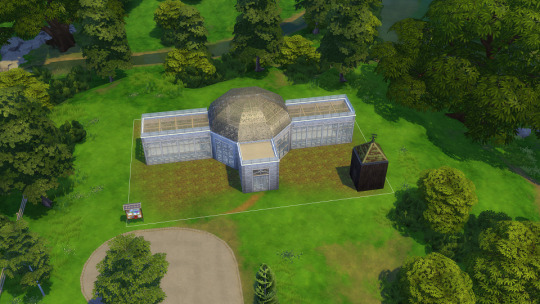
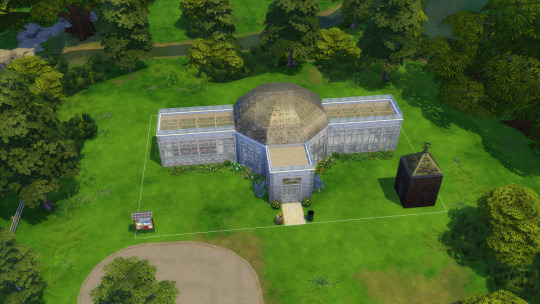





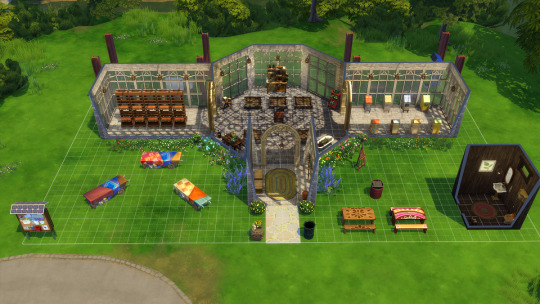
Hello folks! I feel like I need to start moving to an "every OTHER week" schedule when it comes to posting the Chill Valicer Save updates, just because they always have a LOT of pictures, and it takes me a good long while to get them sorted with everything they need (even WITH the ability to now put like thirty pictures in a post if I so desire). So, this week, you instead get a look at one of my more recent builds -- the Community Conservatory! My first-ever Community Space lot! I actually built this for my potential "Valicer In The Dark" save file, as it's meant to represent the abandoned conservatory that Victor turns into a neighborhood garden during the course of that AU. I thought doing it as a community space and having the building noticeably improve as you took it through the Community Garden, Maker Space, and Marketplace lot subtypes would be a neat idea --
And it was indeed! :D It proved to be a pretty simple build -- I knew pretty much exactly what I wanted it to look like, meaning getting the initial shell down was really easy -- but it was a very fun one too. :) Let me take you through the various stages:
Community Space: The "default" space, this is just the shell of the building, with a little outhouse to the side and the voting board. It's completely empty inside, and I've done a little "moveobjects on" to put some cracks and such on some of the windows to make it look a little more rundown. This is the basic "abandoned conservatory" lot.
Community Garden: This is what it looks like after the Three Pillars have got it cleaned up, started making planters, and word has spread around their neighborhood, Six Towers, about this new free garden. I wanted it to look like the community had revitalized it, so all the various cracks and such are gone and there's a bunch of flowers outside. :) The entrance hall has a few hale bales to sit on and some gardening tools; the main octagon has floor planters, a bee box, and various garden-related decorations (lots of potted plants, a potting bench, and the like); the left wing is all about vertical gardens; and the right wing is all about insect farms! Oh, and the outhouse has been gussied up with a floor rug and a bit of art. :) I wanted it to be fun and inviting, and I think it came out well!
Maker Space: People have decided they want to do some crafting here, so some old beams and tin roof sheeting has been scavenged from an old factory and set up as extra cover around the back so people can set up communal crafting projects -- plus some stuff for their children! :) As I didn't want to mess with the main build (the whole point is that this space is CLEARLY the same building, just being built up more and more as you progress through the various spaces), I ended up having to put the "maker space" stuff outside -- and I wanted to make sure it was protected from the rain, so I did the old "floating roofs" trick and put some columns at each corner to make it look like the beams were holding them up. (I WAS going to do proper awnings/pergolas, but either they didn't look right or I couldn't get the stuff underneath them.) Included is the recycling machine, a fabricator, a woodworking bench, and a candle-making station under one roof, and a juice fizzer, three children's activity tables, and some toys appropriate for all ages under the other! So there should be something for just about everyone.
Marketplace: People have decided as long as they're MAKING stuff, they may as well SELL it too and have dragged some selling tables into the front yard...and if they're doing that, there's this old barrel someone turned into a grill, and these planks could be painted or carved and turned into picnic benches... :) The final upgrade to the space, we have the Jungle Adventures selling tables out front, along with some picnic tables and a grill. I was going to put one of the vendor stalls too, as that's a optional thing the game suggests, but none of them looked right, and this is a small lot with limited room, so I decided to forget it (I mean, the picnic area IS already really close to the outhouse, which is both good and bad XD). This is when the conservatory becomes a true community space for the residents, and I wanted it to look even more happy and colorful. I think I succeeded. :)
So yeah, that's the Community Conservatory build! Now, I haven't put this one up on the Gallery, but I would be open to doing it -- if I knew how putting these types of lot up on the Gallery worked. Since, you know, it's REALLY four lots...do you just upload one lot variant at a time, or do you get all four if you upload one? If it's just one lot variant at a time, that's okay -- I'm thinking I'd put up the base "Community Space" build as the only build of mine that does not require fifty million packs. XD Let me know what you think, and how uploading would work! More store shenanigans with the Chill Valicer trio next week!
#sims 4#builds#community conservatory#yeah this one was surprisingly easy#the main shell came together really quickly#and after that it was just a matter of copying it to each lot type#and upgrading it appropriately!#though I did have to go back and add the outhouse retroactively to the original Community Space version#because the base build doesn't require you to have a toilet#so I only built it in the community garden version#and then I was like 'wait it should be in the original version too shouldn't it'#so I saved it as its own room and just added it to the lot XD#but yeah happy to add the base build as another 'renovation' build#should anyone want it#let me know if you do!#it's already in my library so saving it to the Gallery shouldn't be difficult#queued
5 notes
·
View notes
Text
What is Hydroponic Farming System
It is the skill of growing plants in the absence of soil. Hydroponic system depends on a water based nutrient rich solution.
Hydroponic is a method of growing plants in a controlled environment (eg-greenhouses) where nutrients are dissolved in water and delivered directly to the plant’s roots instead of relying on soil for support and nutrition. The hydroponic system utilizes various substrates such as perlite, coconut coir or even air to anchor the plants. The nutrition solution, which contains all the essential elements necessary for plant growth, is carefully monitored and adjusted to ensure optimal conditions.
Here are some key components of Hydroponic Farming -
Growing medium : Instead of soil, hydroponic system use various growing mediums such as rock wool, perlite, coconut coir or even air (Vertical Farming) to support plant roots
Nutrients Solution: A carefully balanced mixture of essential nutrients is dissolved in water and delivered directly to the plant roots. This ensures that plants receive the precise nutrients they need for optimal growth.
Environmental Control: Hydroponic systems enable growers to fine-tune environmental factors like temperature, humidity, light and CO2 levels to create ideal conditions for plant growth . This level of control minimizes the risk of pests and diseases.
Water Recycling: Hydroponics is highly water efficient. Unlike traditional farming which can be water-intensive, hydroponic systems recirculate water, reducing overall consumption. This makes it particularly attractive with water scarcity.
Hydroponic Farming in India -
In India, hydroponic farming is gaining traction due to its potential to address various agricultural challenges, such as water scarcity, limited arable land availability, and the need for sustainable and high-yield crop production. It offers opportunities for urban and peri-urban farming, making it a viable solution for increasing food security and promoting sustainable agriculture practices in the country.
Applications in India:
Hydroponic farming has diverse applications in India:
Urban Agriculture: Hydroponics is well-suited for urban areas, where space is limited, and fresh, locally grown produce is in high demand. Rooftop gardens, vertical farms, and container farming are popular choices for urban agriculture in India.
Commercial Greenhouses: Many commercial growers in India have adopted hydroponic systems for the production of various crops, including tomatoes, cucumbers, and leafy greens.
Research and Education: Hydroponic systems are used in research institutions and educational settings to study plant growth, nutrient management, and environmental control, contributing to agricultural innovation in the country.
Food Security: Hydroponic farming can help improve food security by providing a reliable source of fresh produce, even in regions with challenging climate conditions.
Types of Hydroponic Systems:
There are various hydroponic systems designed to cater to different crops and environmental conditions:
Drip System: Nutrient solution is delivered directly to the base of each plant via a network of tubes and pumps. Excess solution is collected and recirculated, minimizing waste.
Nutrient Film Technique (NFT): In NFT systems, a shallow film of nutrient solution flows over an inclined trough, with plant roots placed in the film. Roots draw nutrients and oxygen from this thin film.
Aeroponics: This system mists the plant roots with a nutrient-rich solution, providing both nutrients and oxygen to the roots through a fine mist. This method encourages rapid growth.
Deep Water Culture (DWC): Plants are suspended in oxygenated nutrient solutions in DWC systems. Air stones or diffusers are used to oxygenate the water, ensuring the roots receive an adequate oxygen supply.
Wick System: The simplest of all hydroponic systems, wick systems rely on capillary action to draw the nutrient solution from a reservoir into the growing medium. This is a passive system that requires no electricity.
Ebb and Flow (Flood and Drain): This system cyclically floods plant containers with the nutrient solution, then allows it to drain, providing oxygen to the roots. This mimics natural irrigation patterns.
Vertical Farming: Vertical hydroponic systems utilize vertical space, allowing for the stacking of plant layers. This approach maximizes crop production in limited space, making it suitable for urban environments.
Kindly visit the profile for more - https://krishilearning.com/
What you"ll discover here -
Educational Resources - Our blog serves as a treasure trove of educational content, including articles and lesson plans, all designed to enhance your understanding of agricultural principles, practices and new technology in agriculture. We explore cutting-edge technologies, such as hydroponics, aquaponics, precision farming, and more, to help you stay ahead in the ever-evolving world of agriculture.
We have designed our website to be user-friendly, making it easy for you to navigate, access, and engage with our content. We value your user experience.
Join Us in Cultivating Knowledge
Whether you are a farmer, a student, a teacher, or simply someone interested in the world of agriculture, krishilearning is here to guide you on your educational journey. Together, we can foster a more sustainable, innovative, and prosperous agricultural sector. Join us in cultivating knowledge, growing communities, and embracing the future of agriculture.
6 notes
·
View notes
Text
Homesteading for the Homeless:
How Converting Empty Commercial Spaces into Indoor Farms Can Address Food Insecurity and Unemployment
The COVID-19 pandemic has led to high vacancy rates for commercial spaces in metropolitan areas, especially malls and skyscrapers. At the same time, homelessness remains a significant issue, especially in coastal cities. One solution to address both these problems is to convert empty commercial spaces into indoor farms and communal living areas for homeless Americans, owned and operated by their workers.
Indoor farming has emerged as a sustainable and efficient method for producing high yields of crops in a small space, regardless of weather or climate conditions. Vertical farming, a method of growing crops in vertically stacked layers, has gained popularity in recent years as a way to maximize space and improve efficiency. Repurposing vacant commercial buildings could create a new industry that addresses food insecurity while providing employment for the homeless.
According to a report from CBRE, the United States had a 16.4% office space vacancy rate at the end of 2020, the highest it has been since 2011. The retail sector was also struggling, with a national vacancy rate of 10.5% in the first quarter of 2021. Meanwhile, homelessness remains a significant issue in coastal cities, with an estimated 580,466 people experiencing homelessness in January 2020, according to the Department of Housing and Urban Development.
Startups in the vertical farming industry have been on the rise in recent years. According to AgFunder, an online platform that connects investors with agtech startups, there were over 60 vertical farming startups that raised over $1.2 billion in funding in 2020. These startups are using innovative techniques to grow crops in urban areas, close to consumers, and reduce transportation costs and emissions.
Converting vacant commercial buildings into indoor farms using vertical farming techniques would provide employment for the homeless and communal living spaces. However, these indoor farms could also be operated as worker-owned commercial enterprises. Communal living spaces for homeless individuals would provide a sense of community and stability, as well as a chance to learn valuable skills through participation in the farming process. By operating the indoor farms as worker-owned enterprises, homeless individuals could take ownership of their work and have a say in the direction of the business.
Homesteading using vertical farming is an opportunity to work with individuals who share the same interests and values. For young people, WWOOF (World Wide Opportunities on Organic Farms) provides opportunities to travel around the world and learn about sustainable agriculture practices. Similarly, converting commercial spaces into worker-owned indoor farms could create new opportunities for homeless individuals to participate in the farming process and learn valuable skills, while also taking ownership of their work.
While there are challenges to converting commercial buildings into worker-owned indoor farms, such as significant investment and expertise, the benefits are significant for those experiencing homelessness and the wider community. By creating worker-owned indoor farms, we could create a new industry that provides stability, food security, and employment opportunities, while building a stronger sense of community.
The conversion of vacant commercial buildings into worker-owned indoor farms using vertical farming techniques and communal living spaces for the homeless could address the challenges facing our society. We have the potential to create a new industry that provides stability, food security, and employment opportunities, while building a stronger sense of community. Let us consider homesteading with worker-owned indoor farming as a solution for the future.
#homeless#vertical farming#sharing economy#cooperation#wwoof#homelessness#cooperative#share#couchsurfing#organic farming#urban gardening#urban planning#economy#collaboration
8 notes
·
View notes
Text
Exploring the Future: Emerging Technologies Shaping Our World
The world of technology is in a constant state of evolution, and it's an exciting journey into the future. As we navigate the 21st century, we find ourselves surrounded by emerging technologies that promise to reshape our lives in profound ways. From artificial intelligence (AI) to virtual reality (VR) and beyond, the future is brimming with innovations that hold the potential to transform industries, improve our daily routines, and challenge our perceptions of what's possible. In this blog post, we'll take a closer look at some of these groundbreaking technologies and the impact they may have on our future.
Artificial Intelligence (AI): The Power of Machine Learning
AI, often described as the pinnacle of human achievement in technology, is already making waves across various industries. Machine learning algorithms are becoming increasingly sophisticated, enabling AI systems to analyze vast datasets, make predictions, and perform tasks that were once reserved for human experts. As AI continues to advance, we can expect to see its applications in healthcare, finance, autonomous vehicles, and even creative fields like art and music composition. AI-driven personal assistants and chatbots will become more intelligent and seamlessly integrated into our daily lives, making our interactions with technology more intuitive and efficient.
Virtual Reality (VR) and Augmented Reality (AR): Immersive Experiences
Virtual reality and augmented reality are revolutionizing the way we experience entertainment, education, and even work. VR immerses users in virtual worlds, while AR overlays digital information onto the physical world. These technologies are poised to redefine the way we learn, play, and connect with others. In education, students can explore historical events or distant planets through immersive VR experiences. In healthcare, surgeons can use AR to visualize patient data during surgery. The gaming industry continues to push the boundaries of VR, providing gamers with unparalleled levels of immersion. As hardware becomes more accessible and affordable, VR and AR will undoubtedly become integral parts of our lives.
5G Connectivity: The Backbone of the Internet of Things (IoT)
The rollout of 5G networks is another milestone in our technological journey. With speeds that dwarf those of 4G, 5G will unlock the full potential of the Internet of Things (IoT). Smart cities will become a reality, with connected devices and sensors optimizing everything from traffic flow to energy consumption. Telemedicine will thrive with low-latency connections, enabling remote consultations and surgeries. The way we work will transform, with remote collaboration tools benefiting from seamless, high-speed connectivity.
Sustainable Technology: A Greener Future
As we grapple with the challenges of climate change, technology is stepping up to provide solutions. Renewable energy sources like solar and wind power are becoming more efficient and affordable. Electric vehicles (EVs) are rapidly gaining popularity, and self-driving EVs promise to revolutionize transportation. Innovations in sustainable agriculture, such as vertical farming and precision agriculture, are increasing food production while minimizing environmental impact. These advancements in green technology are crucial steps toward a more sustainable and environmentally friendly future.
Conclusion
The future of technology is bright, filled with promise, and limited only by our imagination. As these emerging technologies become more integrated into our lives, they will undoubtedly bring about profound changes in the way we work, learn, communicate, and interact with the world around us. Embracing these innovations and staying informed about the latest developments will empower us to thrive in the dynamic landscape of the future. So, fasten your seatbelts, because the journey into the future of tech promises to be an exhilarating one, and we're just getting started.
#auto tech#future_tech#technology#tech news#security#tech house#software#retro tech#tips#witch tips#tech
2 notes
·
View notes
Text
Let’s make a horrible TTRPG setting
Been absorbing way too much post apocalyptic and TTRPG stuff lately, so of course I'm working on a setting:
Glasslands
Named after the huge swaths of land which have been blasted by nuclear fire, Glasslands is a setting in which people have spent generations building and customizing family- and community-owned mechanical hardsuits.
Hardsuits
Hardsuits are not susceptible to radiation or cosmic rays because they're heavily shielded and rely mainly on purely mechanical systems rather than electronics to move the limbs and equipment. Most hardsuits use high pressure hydraulics pumped by their engines, and use complex gearboxes and pumping mechanisms similar to a car's power steering to drive them.
Over many generations of customization, repair, and new users, the hardsuits gain a sort of familial identity which sets each one apart from any other. Every hardsuit looks different, has different features, and is designed to fit different people.
Hardsuits are often powered by petroleum-based fuels, though some have been converted to work on alcohol, coal, or even burning wood. Many hardsuits use crude petroleum, and are often visible from long distances because of their exhaust columns. Larger mechanical mecha-type machines can use nuclear or steam power depending on who is running them, and each one is completely unique from all the rest.
The Glasslands
The glasslands themselves are huge swaths of land which have been glassed by atmospheric nuclear detonations, turning large areas into radioactive deadzones that look similar to wide expanses of obsidian or fields of cooled lava. Nothing grows in the glasslands, and they're extremely dangerous to traverse because they're highly irradiated and leave you visible for miles.
When traversing the glasslands, most groups will have spotters on designated watch rotations who ride a hardsuit and keep their eyes peeled in all directions. Because even the best hardsuit has extremely limited, tank-like visibility, it's important for their drivers to have spotters who can call out potential threats or obstacles that may not be visible through the tiny slot, aperture, or periscope available to them.
Travel
When traveling in groups, there are never enough hardsuits for more than one or two people, so anyone not in a hardsuit is carried in lead-lined tents on trailers, or sometimes in human-sized bags which hang off the outside of hardsuits. Whole families are sometimes carried slung in leaden bags which hang off a hardsuit like saddlebags on a horse.
The lead lined bodybags that hold a driver's companions are usually equipped with small interior lights, attached water reserves, waste catchers, and various air filtration systems. With enough rations, a person can live for a week or two in a bodybag, though that type of span is usually only for long-distance travel. Before exiting a bodybag, you should always check your external Geiger counter to make sure you're not going to turn into soup.
Carbon Forests
Stands of trees or tall buildings directly under the air bursts of atmospheric nuclear detonations result in hazardous areas called carbon forests. Because the energy from the blast is going straight down, perfectly vertical structures remain standing even in completely carbonized form, and are a great place to ambush or be ambushed.
Carbon forests are especially common along the west coast of the continental US and Canada where chains of nuclear detonations turned the redwoods and sierras into raging firestorms that lasted months. Areas like Los Angeles and the farmlands of the California Central Valley alternate between glasslands and carbon forests where population centers and huge farm communities were obliterated.
9 notes
·
View notes